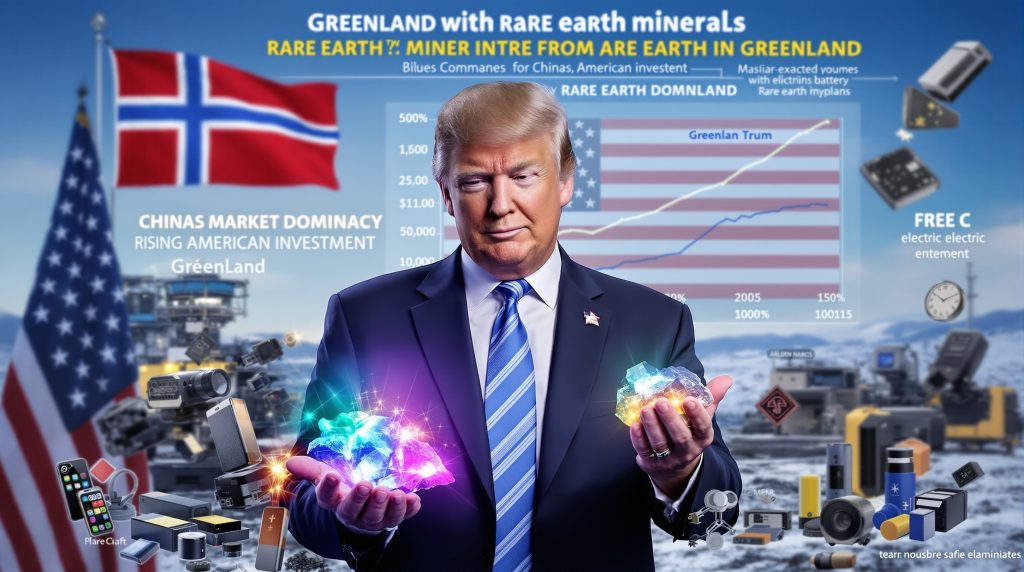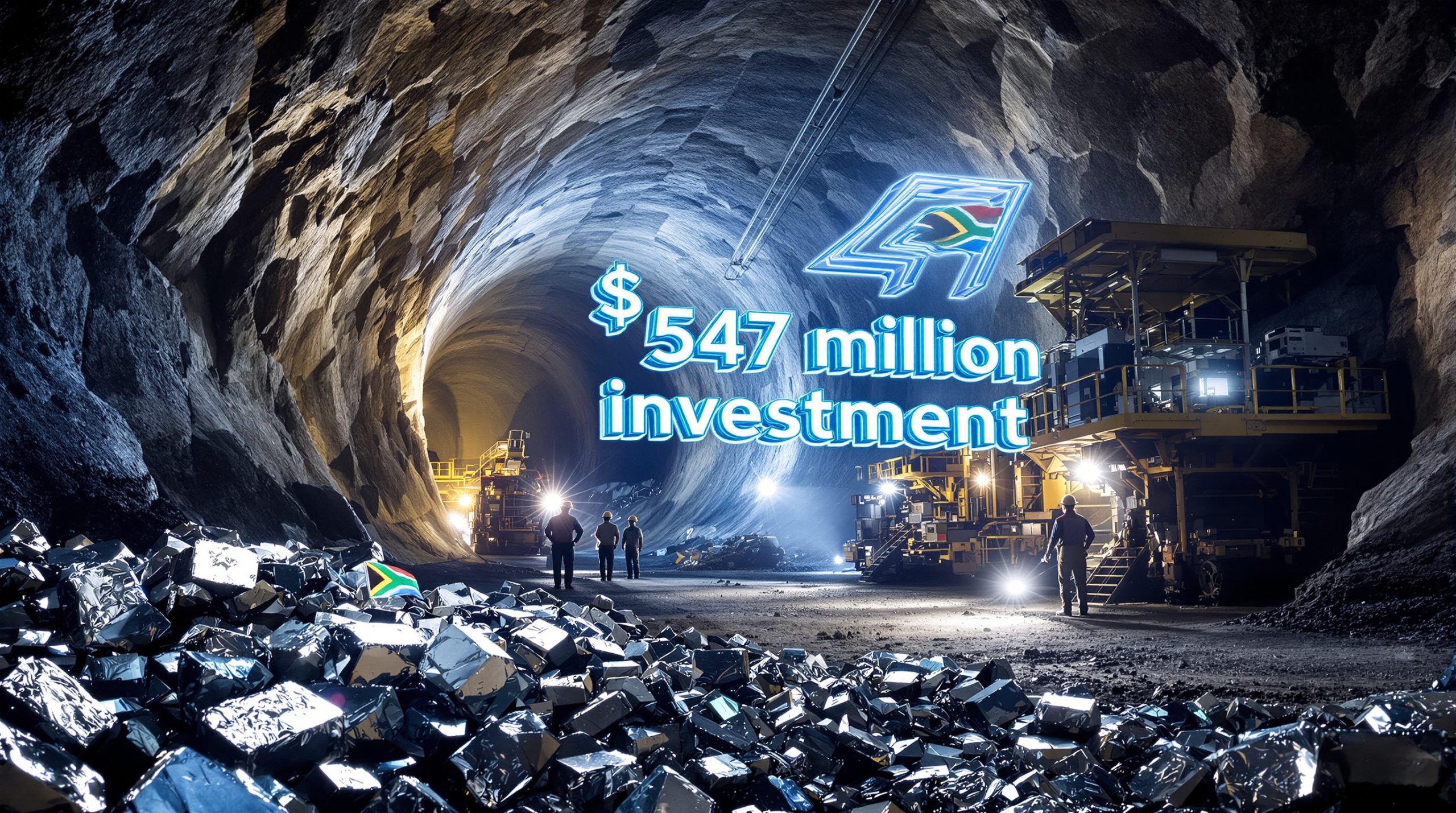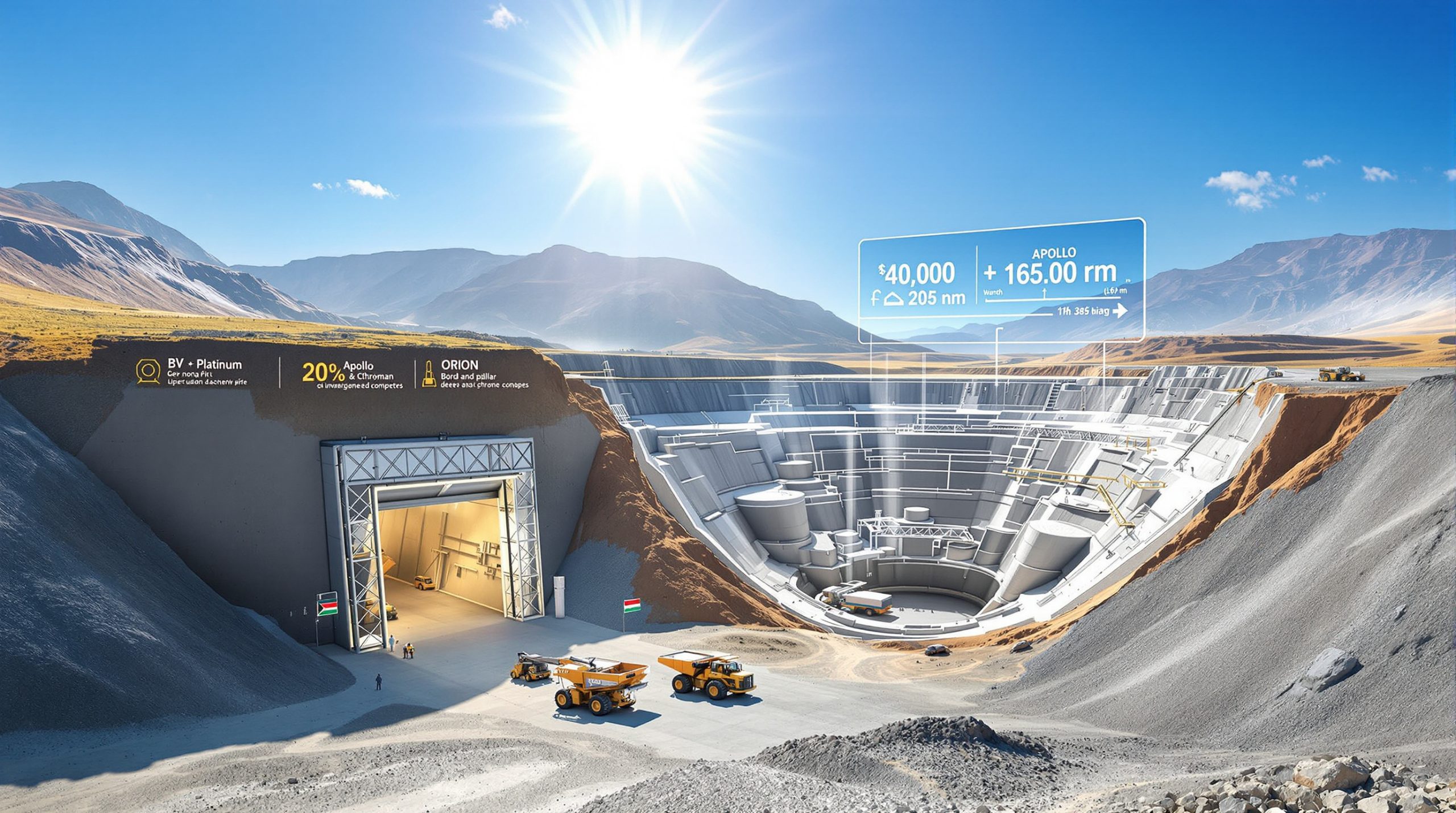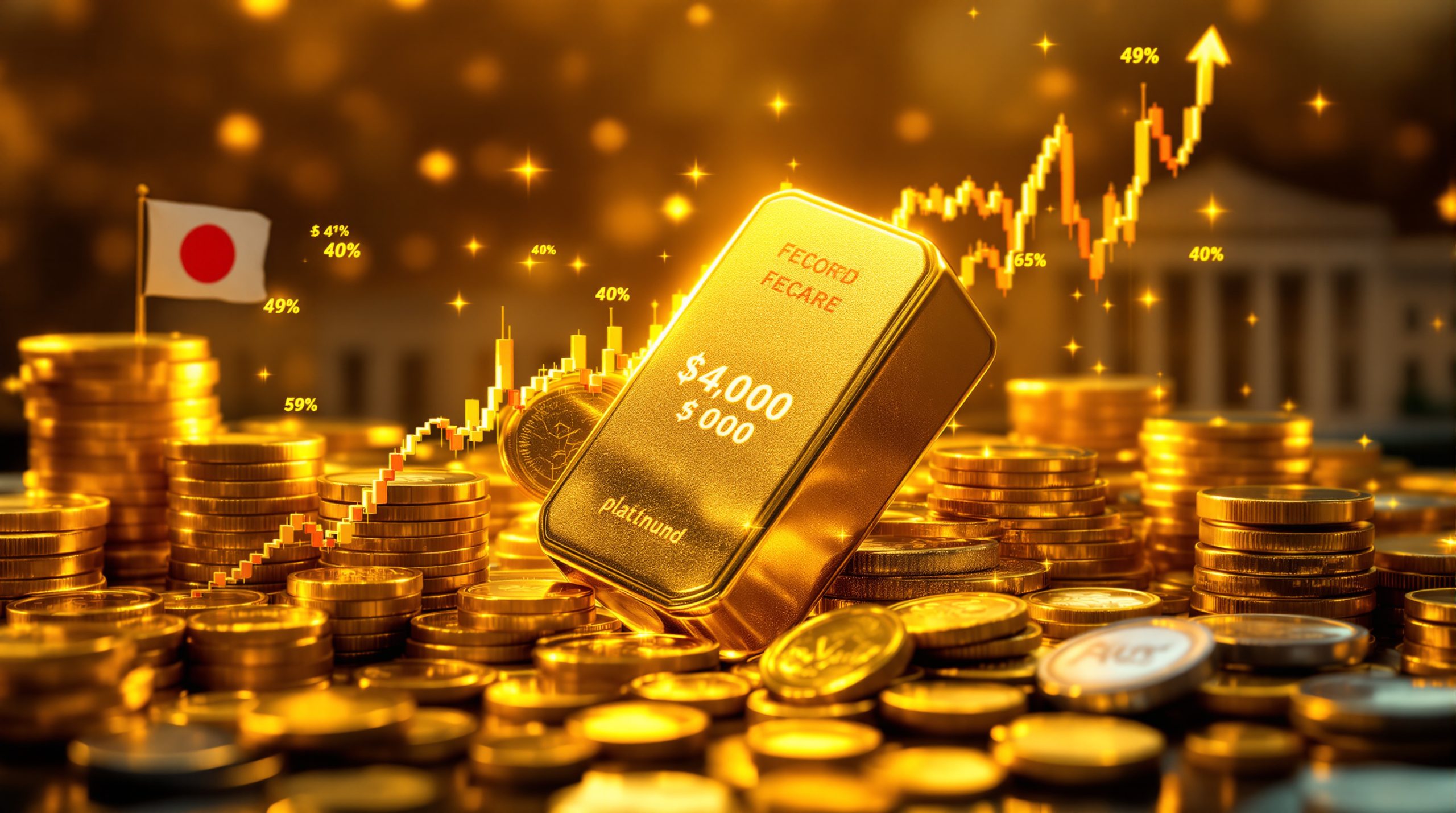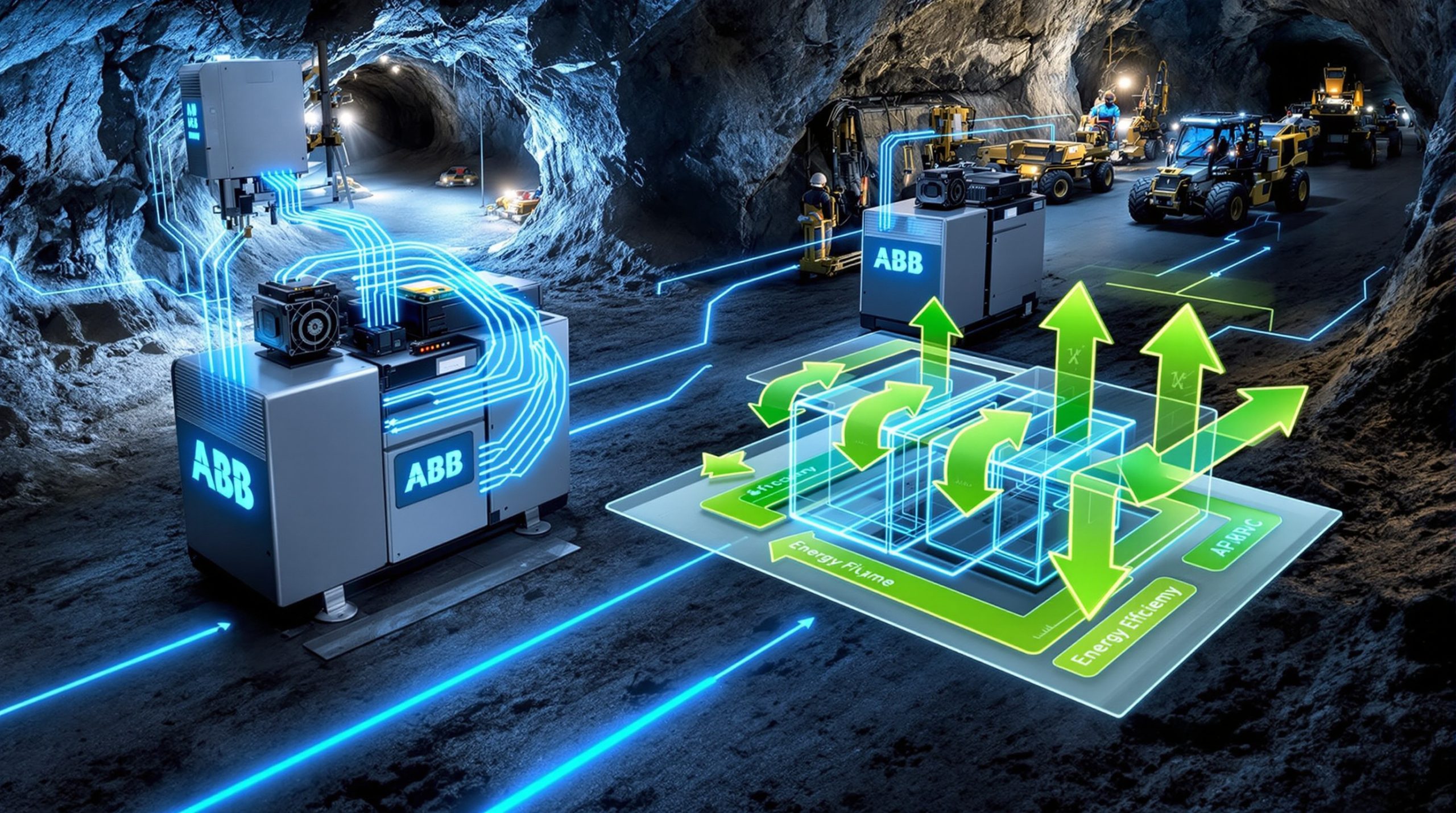Understanding Trump's Strategic Interest in Greenland's Mineral Wealth
The Trump administration has intensified focus on securing America's access to critical minerals, with Greenland's Critical Minerals becoming a strategic priority. This policy direction reflects mounting concerns about China's dominance in global rare earths markets and underscores the administration's commitment to strengthening domestic supply chains for these vital resources.
Beyond the headline-grabbing 2019 suggestion that the United States might purchase Greenland outright, the administration has been systematically developing a comprehensive strategy to gain access to the island's mineral wealth through more conventional means – direct investment and strategic partnerships.
Why Are Rare Earth Elements So Important?
Rare earth elements comprise a group of 17 metallic elements with unique properties that make them indispensable components in modern technology. These minerals provide exceptional magnetic properties and electronic characteristics that cannot be replicated by alternative materials in many high-tech applications.
Despite their name, rare earth elements aren't particularly scarce in the Earth's crust. However, economically viable concentrations are uncommon, and the extraction and processing of these minerals present significant technical challenges requiring specialized expertise.
These elements are critical components in:
- Military defense systems including missile guidance systems and radar technologies
- Renewable energy infrastructure such as wind turbines and solar panels
- Electric vehicle motors and battery systems
- Advanced electronics including smartphones and computers
- Medical technologies like MRI machines
The International Energy Agency estimates that demand for rare earths could increase by 600% by 2040, driven primarily by the critical minerals for energy transition.
The Geopolitical Significance of Greenland's Resources
Greenland possesses some of the world's largest undeveloped rare earth deposits, making it a territory of enormous strategic importance. The island's resources have gained prominence as nations seek to diversify supply chains away from China, which currently controls approximately 85% of global rare earth processing capacity.
The U.S. Geological Survey has identified Greenland as hosting potentially the world's largest undeveloped deposits of rare earth minerals outside China. The Kvanefjeld and Tanbreez projects alone could supply a significant portion of global demand for decades.
Additionally, Greenland's position in the Arctic region gives it geopolitical importance beyond just mineral resources, with climate change opening new shipping routes and creating strategic opportunities.
What Investment Strategies Is the Trump Administration Pursuing?
The Trump administration is employing a multi-faceted approach to securing interests in Greenland's mineral resources, combining direct investment, financing support, and legislative mechanisms.
Potential Equity Stake in Critical Metals Corp
According to Reuters reporting, the administration has engaged in discussions about acquiring a stake in Critical Metals Corp, the company developing the Tanbreez rare earths project in Greenland. This potential investment would give Washington direct influence in one of the world's most significant rare earth developments outside China.
Key Details of the Potential Investment:
- The administration has discussed converting a $50 million grant application into an equity position
- This conversion would potentially represent approximately an 8% stake in the company
- The size of the final stake could change as negotiations continue
- The discussions follow a pattern of similar strategic mineral investments by the federal government
A senior Trump administration official acknowledged the significant interest in government investment, stating: "Hundreds of companies are approaching us trying to get the administration to invest in their critical minerals projects."
Export-Import Bank Financing Consideration
Beyond direct equity investment, the administration is exploring additional financial support through the U.S. Export-Import Bank:
- A separate $120 million loan is under consideration
- This financing would support technical development and initial production phases
- The loan would help accelerate the timeline toward commercial operation by 2026
- If approved, this would represent one of the bank's largest investments in critical minerals
Defense Production Act Utilization
The administration is leveraging Cold War-era legislation to support critical mineral projects:
- Critical Metals applied for a $50 million grant through the Defense Production Act in June
- This mechanism allows the government to prioritize production of materials essential for national security
- The potential conversion of this grant to equity demonstrates a strategic shift toward ownership stakes rather than just subsidies
- The Defense Production Act has been increasingly utilized for minerals security since 2022
What Makes the Tanbreez Project Strategically Valuable?
The Tanbreez project represents one of the most promising mineral resource developments in Greenland, offering significant production potential and a diverse range of critical materials.
Resource Potential and Production Timeline
The project's scale makes it particularly attractive for strategic investment:
- Expected to produce 85,000 metric tons of rare earths concentrate annually once fully operational
- Development timeline targets initial production by 2026
- Total project development cost estimated at $290 million
- Located near a major waterway, providing logistical advantages despite its remote location
Mineral Diversity Beyond Rare Earths
The project offers access to multiple critical minerals beyond just rare earths:
- Contains significant gallium deposits, a mineral China restricted exports of in 2023
- Includes tantalum resources, used in electronic components and high-temperature alloys
- Provides a diverse portfolio of elements critical to technology manufacturing
- Represents a potential alternative source for minerals currently dominated by Chinese suppliers
Acquisition Background
The project's ownership history reflects its strategic importance in international mineral politics:
- Critical Metals acquired the Tanbreez deposit for $5 million in cash and $211 million in stock
- The acquisition occurred after former President Biden reportedly advocated for the sale to an American company
- This price was significantly lower than what a Chinese firm had reportedly offered
- The transaction demonstrates the bipartisan recognition of rare earth resources as national security assets
How Does This Fit Into Broader U.S. Mineral Strategy?
The potential investment in Tanbreez represents one component of a comprehensive approach to mineral security that spans multiple initiatives and legislative frameworks.
Pattern of Strategic Investments
The Tanbreez project investment discussions follow a pattern of similar government stakes in critical mineral companies:
- Recent investments in Lithium Americas demonstrate commitment to battery materials
- Stakes in MP Materials show focus on rare earth production and processing
- These investments reflect a whole-of-government approach to mineral security
- The strategy represents a shift toward direct government ownership in strategic resource companies
The administration's 5% stake in Lithium Americas, which is developing a lithium project in Nevada, demonstrates a consistent approach of taking minority positions rather than seeking controlling interests.
Legislative Support for Mineral Independence
The administration has explored creative funding mechanisms for critical mineral projects:
- Consideration of reallocating $2 billion from the CHIPS Act to fund critical minerals initiatives
- Emphasis on leveraging existing legislative frameworks to accelerate mineral development
- Focus on public-private partnerships to maximize investment impact
- Integration of national security concerns with economic development goals
Continuing Diplomatic Engagement with Greenland
The administration has maintained consistent diplomatic focus on Greenland:
- Vice President JD Vance visited the island in March to strengthen relations
- Previous administrations have similarly prioritized engagement with Greenland's government
- The U.S. maintains significant military presence in northern Greenland through air force facilities
- Diplomatic engagement encompasses both security and economic development dimensions
What Challenges Does the Tanbreez Project Face?
Despite its strategic importance, the Tanbreez project faces significant challenges that could impact its development timeline and ultimate success.
Development Hurdles in Greenland
Mining development in Greenland faces several significant challenges:
- Remote Arctic location creates logistical complexities for equipment and personnel
- Harsh climate conditions limit operational windows to certain months
- Environmental concerns require careful management and mitigation
- Limited existing infrastructure increases development costs
- Local political considerations include balancing economic development with environmental protection
Greenland's mining sector has developed slowly in recent years, with only two small mines currently in operation according to Reuters reporting. This slow pace has been attributed to limited investor interest, bureaucratic challenges, and environmental concerns.
Competitive Global Landscape
The project operates in a complex global market for rare earths:
- China maintains dominant position in processing and refining
- Other countries are rapidly developing competing projects
- Market dynamics and price volatility create investment uncertainties
- Chinese export restrictions on critical minerals could affect market conditions
- Emerging technologies may reduce dependence on certain rare earth elements
Infrastructure Requirements
Successful development will require substantial supporting infrastructure:
- Transportation systems for moving concentrate to processing facilities
- Energy supply in remote locations
- Technical expertise for specialized extraction and processing
- Environmental monitoring and management systems
- Community development and local workforce training
What Are the Implications for U.S.-China Relations?
The investment in Greenland's rare earth resources represents a significant move in the ongoing strategic competition between the United States and China.
Strategic Competition for Critical Resources
The investment represents another front in U.S.-China strategic competition:
- Direct challenge to China's rare earth dominance
- Signal of U.S. commitment to secure supply chains
- Potential catalyst for further investment in non-Chinese rare earth sources
- Part of a broader pattern of economic competition in critical sectors
China's near-monopoly on rare earth processing has created strategic vulnerabilities that became apparent in 2010 when Beijing restricted exports during a territorial dispute with Japan, causing prices to skyrocket and alarming Western nations.
Impact on Global Supply Chains
Successful development of Tanbreez could reshape global rare earth markets:
- Diversification of supply beyond China
- Potential price stabilization through increased competition
- Creation of alternative processing and refining capacity
- Reduced vulnerability to supply disruptions from a single source
- Establishment of more transparent market mechanisms
Technology Security Dimensions
The focus on rare earths highlights their role in national security:
- Critical components for defense systems including precision-guided munitions
- Essential materials for energy transition technologies
- Strategic resources for maintaining technological leadership
- Foundation for advanced manufacturing capabilities
- Enabling materials for next-generation communications systems
How Does This Investment Benefit U.S. Industry?
Beyond national security considerations, the potential investment in Greenland's rare earths offers significant benefits for American industrial capacity.
Securing Supply for Manufacturing
U.S. investment in Greenland's rare earths provides several industrial benefits:
- Reliable supply chains for American manufacturers
- Reduced vulnerability to export restrictions or price manipulation
- Support for domestic processing and value-added production
- Greater price stability and predictability for industrial planning
- Creation of strategic reserves for critical materials
Technology Development Opportunities
Access to rare earths enables advancement in key technology sectors:
- Electric vehicle production and battery technology
- Renewable energy systems, particularly wind turbines
- Advanced electronics and communications equipment
- Quantum computing and next-generation semiconductor development
- Defense technology innovation and modernization
Job Creation and Economic Impact
The investment strategy supports broader economic goals:
- Development of domestic processing capacity creates high-skilled jobs
- Stimulates research and development in materials science
- Strengthens America's position in high-tech manufacturing
- Creates opportunities for supporting industries and supply chain participants
- Establishes foundations for long-term industrial competitiveness
What's Next for U.S. Rare Earth Strategy?
The Tanbreez investment represents one component of an evolving strategy that will continue to develop along several paths.
Pending Investment Decisions
Several key decisions remain in the near term:
- Finalization of the equity stake size and structure
- Determination of warrants issuance mechanism
- Completion of Export-Import Bank loan approval process
- Integration with other strategic mineral investments
- Coordination with defense industrial base requirements
Broader Strategic Implementation
The Greenland investment fits within a comprehensive approach:
- Continued identification of additional resource opportunities globally
- Development of domestic processing and refining capacity
- Creation of strategic stockpiles for critical materials
- Research into recycling and substitution technologies
- International partnerships with allied nations for supply chain security
Long-Term Supply Chain Transformation
The ultimate goal extends beyond individual investments:
- Building resilient, diversified supply networks
- Reducing dependency on potentially unreliable sources
- Ensuring American technological leadership through materials security
- Creating competitive advantages in emerging technologies
- Establishing sustainable and environmentally responsible production practices
Strategic Minerals as National Priority
The Trump administration stake in Greenland rare earths mine demonstrates how critical minerals have become central to national security, economic prosperity, and technological leadership. By pursuing direct investment in projects like Tanbreez, the U.S. is taking concrete steps to address vulnerabilities in its supply chains while positioning American industry for future competitiveness in high-tech manufacturing.
The approach represents a significant evolution in U.S. industrial policy, with more direct government intervention in strategic sectors than has been typical in recent decades. This shift acknowledges that in certain critical areas, market forces alone may not adequately address national security requirements.
As global competition for these resources intensifies, strategic investments in rare earth production represent more than economic opportunities—they are increasingly viewed as essential components of national security and technological sovereignty.
Disclaimer: This article contains speculative analysis about potential investment decisions and geopolitical strategies. The information presented is based on publicly available sources and is subject to change as situations evolve. Readers should not make investment decisions based solely on this analysis.
FAQs About U.S. Investment in Greenland's Rare Earths
What are rare earth elements and why are they important?
Rare earth elements are a group of 17 metallic elements with unique properties that make them essential for many high-tech applications, including permanent magnets, catalysts, and electronic components. They're crucial for technologies ranging from smartphones and electric vehicles to military systems and renewable energy.
Why is Greenland significant for rare earth resources?
Greenland hosts some of the world's largest undeveloped rare earth deposits, including the Tanbreez project. These resources have become strategically important as nations seek to diversify supply chains away from China's dominant position in the market.
How would U.S. investment in Greenland's rare earths affect China?
U.S. investment represents a direct challenge to China's near-monopoly on rare earth processing. Developing alternative sources could reduce Chinese leverage over global supply chains and potentially stabilize prices through increased competition.
What timeline is expected for the Tanbreez project development?
The Tanbreez project is targeting initial production by 2026, with full operational capacity expected to reach 85,000 metric tons of rare earths concentrate annually once development is complete.
How does this investment strategy compare to previous administrations?
This approach represents a continuation and expansion of efforts begun under previous administrations to secure critical mineral supplies, though with greater emphasis on direct government investment and equity stakes rather than just regulatory support or research funding. Additionally, Trump's Critical Minerals Order and the recent big pivot on critical minerals strategy demonstrate a renewed focus on securing these resources, similar to the recent strategic antimony investment.
Ready to Capitalise on the Next Major Mineral Discovery?
Gain a market-leading edge with Discovery Alert's proprietary Discovery IQ model, which instantly notifies subscribers about significant ASX mineral discoveries like those happening in Greenland's rare earth sector. Explore historic examples of exceptional investment returns on our dedicated discoveries page and begin your 30-day free trial today.
